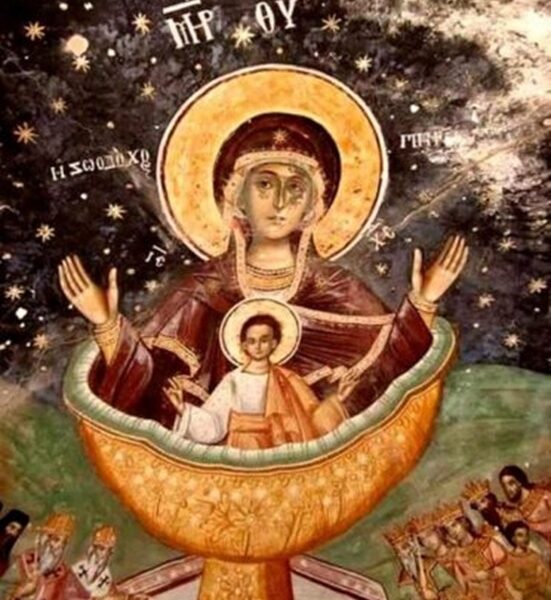The Life-Receiving Spring raises a dead man and our Lady supports the church during an earthquake
21 April 2023Edited by Stelios Koukos
This truly life-bearing spring once raised a dead man. This amazing miracle happened in this way: There was once a man from Thessaly who died, on a boat ,while making a trip to Constantinople and to the Life-Receiving Spring in particular.
Before he died, however, and while he was breathing his last, he told the sailors on board to get him to the church of the Spring whatever happened, even if he were dead. Then they were to throw three buckets of water from the Spring over him, before they buried him. This they did. The sailors took his corpse to the church and, after they’d thrown blessed water from the Spring over him, he arose, as he’d said.
A good few years later, a huge earthquake occurred while the church was full. The building was in danger of collapsing at any moment but then the Mother of God appeared, visible to all eyes, and held it up until all of those inside were able to evacuate it.

Adapted from the Synaxari for the feast.
After years of trying, I’m unable to come up with a compelling or satisfactory reason why ‘Life-Receiving Spring’ should be translated into English as ‘Life-Giving’. In both the original Greek and in the Slavonic translation, it’s clear that the attribute of the Mother of God is ‘life-receiving’, as can also be seen from the icons of the feast. Theologically, it’s inadmissible to say that our Lady ‘gives life’. Only God can do so. And an exhaustive search of the hymns for Vespers and Matins for the feast reveals nothing that suggests that the Mother of God gives life. Of course, if one equates the waters of the spring with our Lady and says that they ‘give life’, as in the example provided here, then, at a stretch, it might be permissible to alter the name. But the fact remains: it would be an alteration of the words used in the original Greek and the Slavonic. [WJL]






